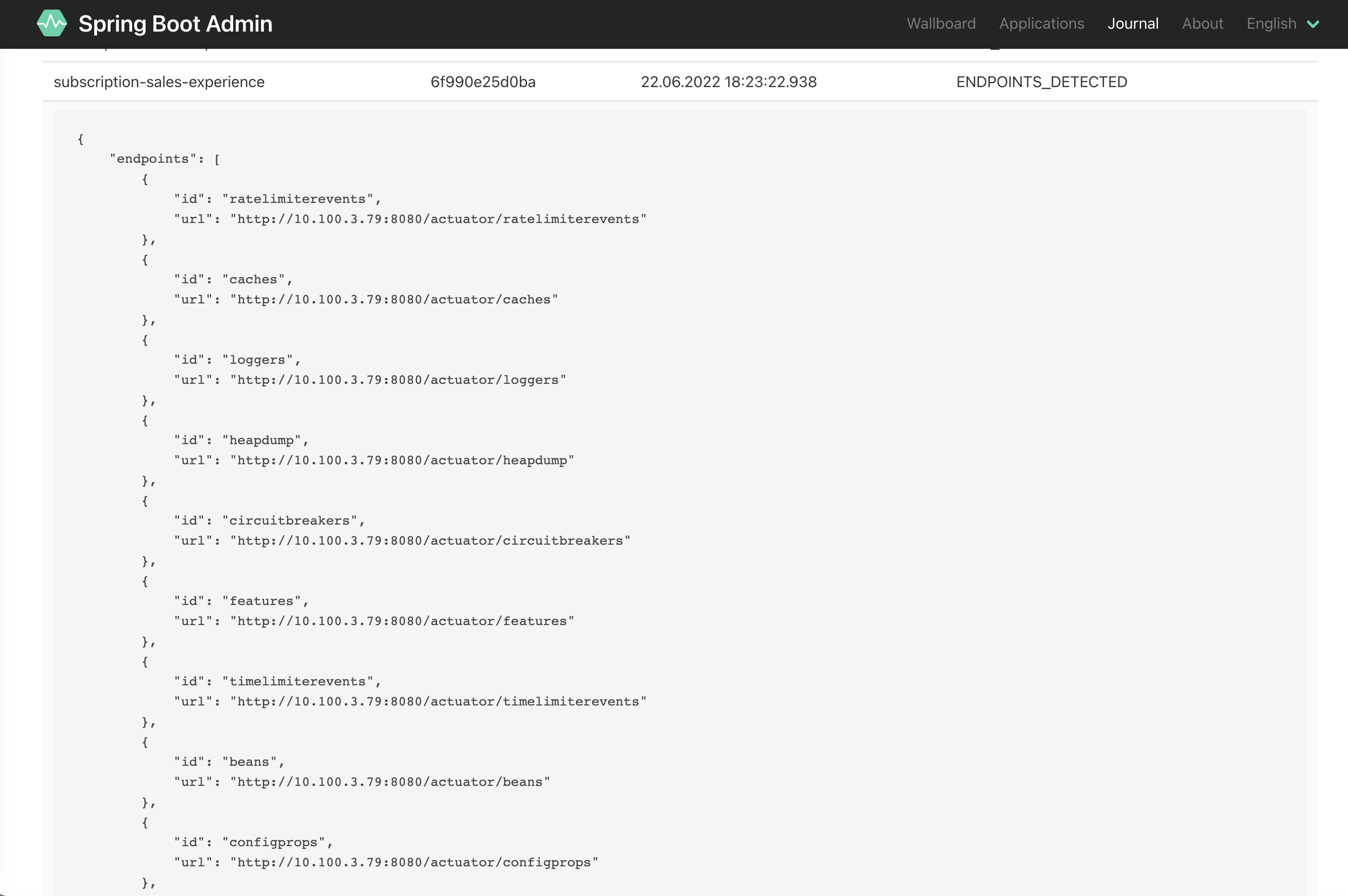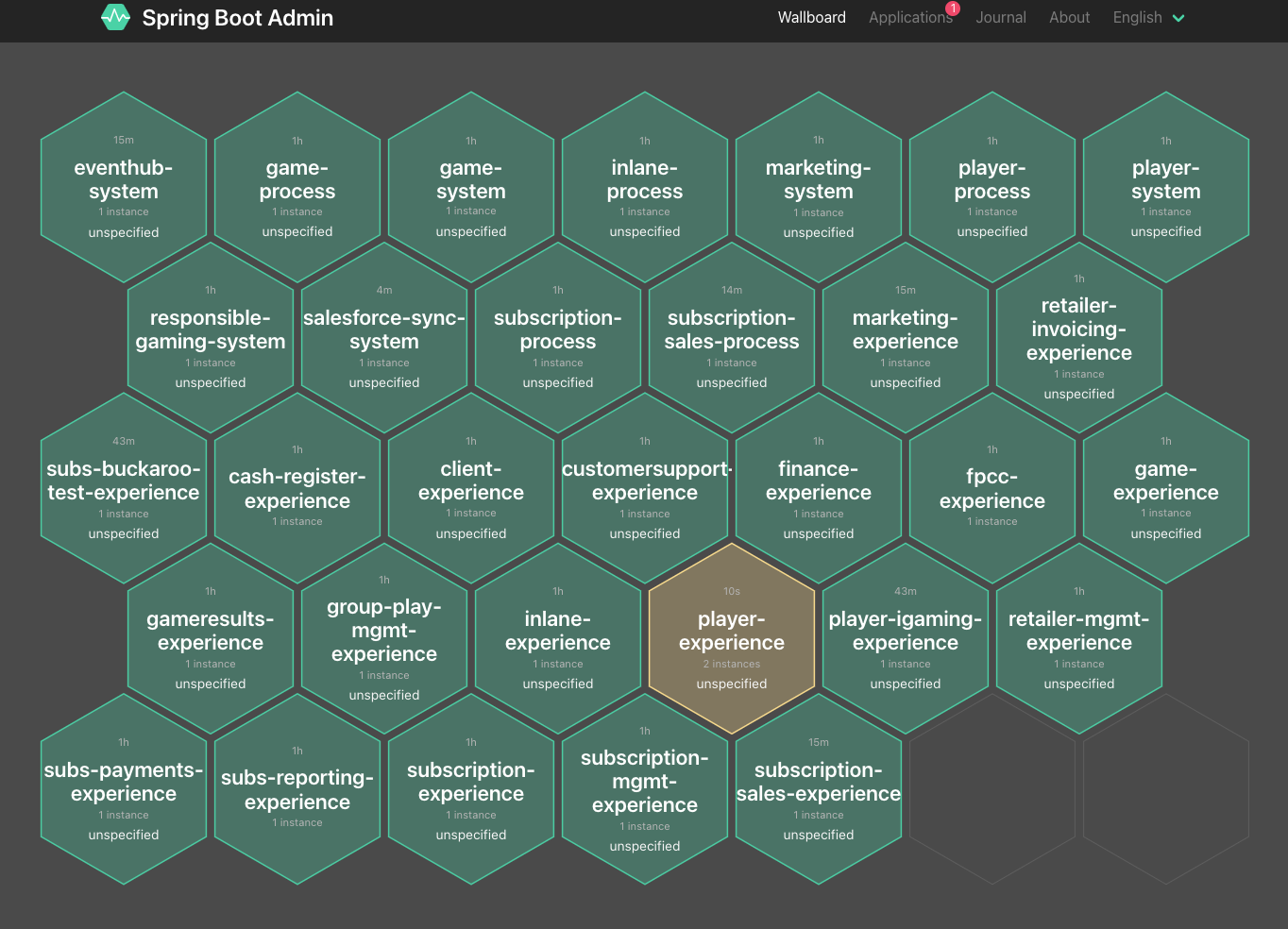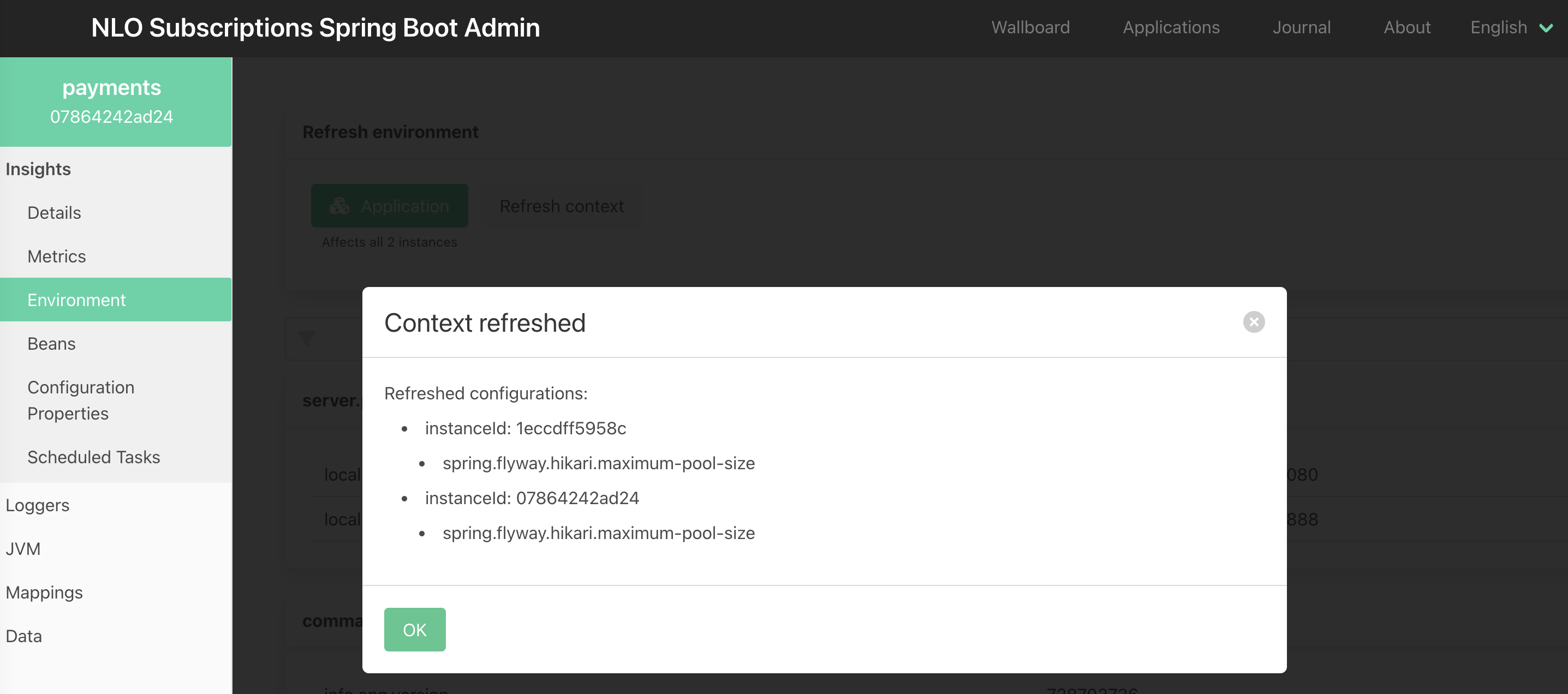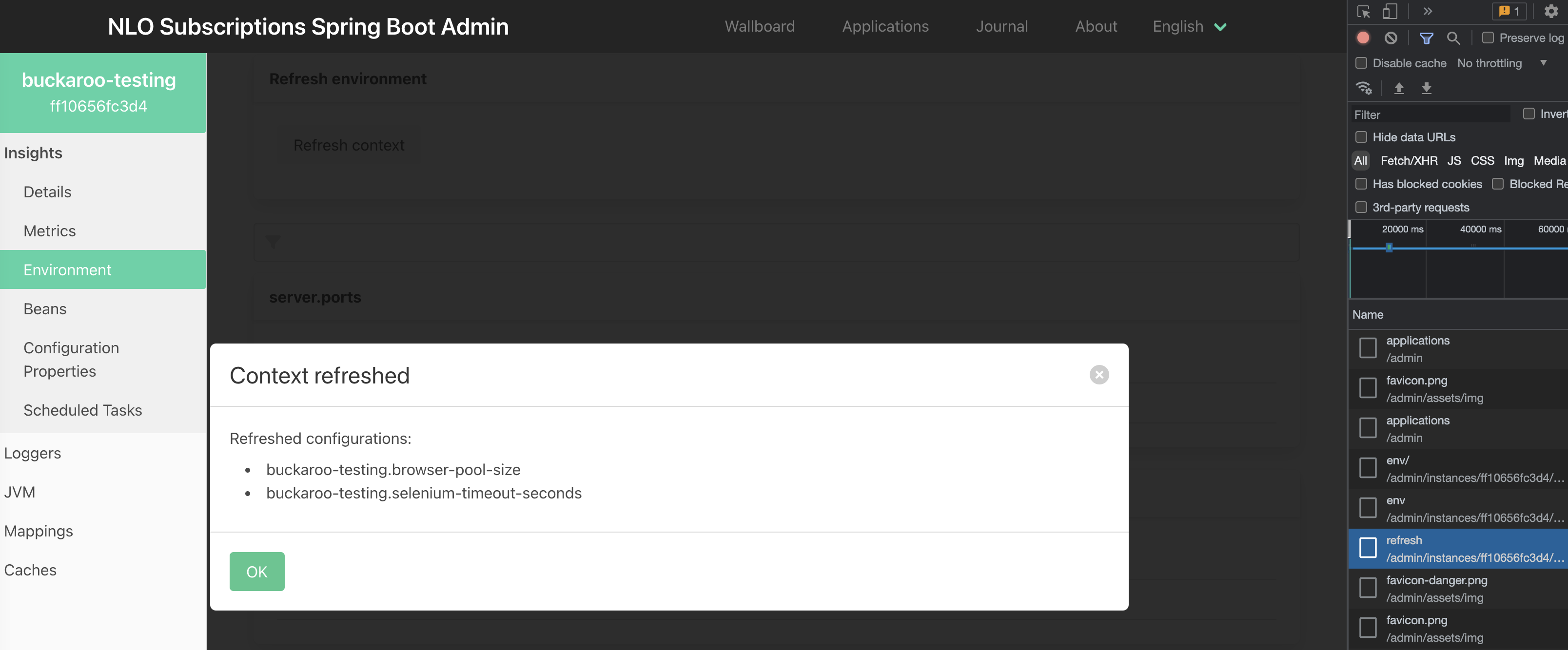In this blog post I am experimenting with Helm, the package manager for Kubernetes by packaging codecentric’s Spring Boot Admin
for out-of-the-box real-time insights into a suite of Spring Boot Java services deployed to Amazon Elastic Kubernetes Service (EKS).
Spring Boot Admin gives a nice overview, see above, the post image, of what is deployed in your Kubernetes cluster, in one or more namespaces.
Behind the scenes, its magic is given by the Spring Boot Actuator endpoints.

One of the easiest ways to install Java Spring Boot applications on Amazon Elastic Kubernetes Service (EKS) is using Helm as it offers:
- package management via a common
blue-printcalledhelm chartwhich is a collection ofyamlfiles bundled together - templating of dynamic configuration, think of possible Java options (
java -X), service name, http port, any other configuration eligible for being externalised in order to make thehelm chartre-usable, as well as application secrets - easy override of dynamic configuration per environment and service. Example increase replica count for a stateless critical service in an environment under higher load:
replicaCount: 5 - release management by providing a history of charts installation within the EKS cluster
➜ helm-charts (master) ✗ helm history spring-boot-admin REVISION UPDATED STATUS CHART APP VERSION DESCRIPTION 1 Mon May 9 11:05:36 2022 superseded spring-boot-admin-0.0.2 2.6.6 Install complete 2 Thu May 12 13:47:23 2022 superseded spring-boot-admin-0.0.3 2.6.7 Upgrade complete 3 Thu May 12 15:02:49 2022 deployed spring-boot-admin-0.0.3 2.6.7 Upgrade complete ➜ helm-charts (master) ✗ helm rollback spring-boot-admin 1 Rollback was a success! Happy Helming! ➜ helm-charts (master) ✗ helm history spring-boot-admin REVISION UPDATED STATUS CHART APP VERSION DESCRIPTION 1 Mon May 9 11:05:36 2022 superseded spring-boot-admin-0.0.2 2.6.6 Install complete 2 Thu May 12 13:47:23 2022 superseded spring-boot-admin-0.0.3 2.6.7 Upgrade complete 3 Thu May 12 15:02:49 2022 superseded spring-boot-admin-0.0.3 2.6.7 Upgrade complete 4 Thu May 12 16:05:42 2022 deployed spring-boot-admin-0.0.2 2.6.6 Rollback to 1 ➜ helm-charts (master) ✗
Creating the Spring Boot Admin Helm Chart
One of the reasons Helm is so popular is the ease of finding charts in open-sourced repositories. I even
started my experiment with this Spring Boot Admin chart but then discovered
that my installation use-case required a bit different Kubernetes objects to be created:
ClusterRoleinstead of aRoleClusterRoleBindinginstead of aRoleBinding- I’ve wanted to customize the
ServiceAccountannotations to something in the trend:eks.amazonaws.com/role-arn: arn:aws:iam::awsAccountId:role/projectName/awsEnv/eks-spring-boot-admin - as well as I’ve implemented slight changes to the
ConfigMapandDeployment
I’ve kept the container image to the one published into Red Hat’s Quay.io registry: quay.io/evryfs/spring-boot-admin:2.6.7, as I:
- liked that the maintainer is actively providing new versions in alignment with codecentric’s Spring Boot Admin releases
- base image is using Java 17, at the moment of writing, just like the Spring Boot applications I am scraping for insights in my assignment, as part of my experiment
- find it packages the minimum of dependencies spring-boot-admin-starter-server and spring-cloud-kubernetes-fabric8-discovery
- wanted to keep it simple while researching its capabilities. It is though recommended to build & publish your own container image, when you desire Spring Boot Admin UI customizations or plan deploying it to production.
Use
helm repo addto expand your list of trusted helm charts repositories andhelm search repoto search charts in those repositories.➜ ~ helm repo add bitnami https://charts.bitnami.com/bitnami "bitnami" has been added to your repositories ➜ ~ helm search repo spring NAME CHART VERSION APP VERSION DESCRIPTION bitnami/spring-cloud-dataflow 9.0.0 2.9.4 Spring Cloud Data Flow is a microservices-based...
Updated Helm chart can be found here
Lessons Learnt and Chart Usage
Treat your pods according to their needs
Containers are just processes. In Kubernetes not all containers are equal. When you launch a pod in Kubernetes,
a really nice and sophisticated piece of software called scheduler determines which host should be chosen to run it.
If you describe your pod after it is running, you’ll notice a label called QoS Class.
While leveraging Spring Boot Admin helm chart,
the QoS class that gets assigned to the pod is BestEffort. And yes, that’s the worst, less prioritized class.
The Spring Boot Admin pod would be between the first one(s) to be evicted, murdered as a process ;), when host is running low on resources.
While that’s perfectly fine in a development environment, in production running one replica of the Spring Boot Admin process with QoS Class: BestEffort
means your insights on your Spring Boot applications may come and go.
Namespace Bound or Cluster-Wide?
In my assignment, I needed to scrape Spring Boot Applications being installed in two Kubernetes namespaces.
With the initial Helm chart installation and setting configuration spring.cloud.kubernetes.discovery.all-namespaces to true (see Listing 1 below), the installation is discovering only services installed
in one namespace: gateway-private, the namespace I’d use, by project convention, for all deployments of services that are not publicly exposed via an Ingress or IngressRoute.
Thus, it was not discovering any of the Spring Boot applications deployed in gateway-public.
The reason for that is: Roles in Kubernetes are scoped, either bound to a specific namespace or cluster-wide.
While a namespace bound Role is a safer practice, my only solution for the Spring Boot Admin Tool to discover all the services I was interested in, while creating a Role instead of a ClusterRole, was to install the Role and RoleBinding Kubernetes objects (see Listing 3 below) in both namespaces.
In which case I also need to install the ServiceAccount (see Listing 4 below) in both namespaces, as User accounts are for humans and Service accounts are for processes in Kubernetes, which run in pods.
User accounts are intended to be global. Service accounts are namespaced. As the ServiceAccount is then used in the Deployment, I end up,
installing the whole Helm chart in both gateway-private and gateway-public namespaces. That would look, in my terminal, something in the trend:
helm-charts (main) ✔ helm install --set namespace=gateway-private \
--set multi.namespaced=false \
spring-boot-admin-gw-private ./spring-boot-admin --debug
followed by:
helm-charts (main) ✔ helm install --set namespace=gateway-public \
--set multi.namespaced=false \
spring-boot-admin-gw-public ./spring-boot-admin --debug
Now I have two Spring Boot Admin services I need to port-forward into, use separate local ports, and two Spring Boot Admin UI browser tabs, in order to see all services insights. That is cumbersome, and my requirement was to collect insights from all Spring Boot Java applications in one overview.
I ended up using the alternative solution, which is to create a ClusterRole and ClusterRoleBinding (see Listing 2 below) and leveraging chart usage:
helm-charts (main) ✔ helm install --set namespace=gateway-private \
--set multi.namespaced=true \
spring-boot-admin ./spring-boot-admin --debug
---
# Source: spring-boot-admin/templates/configmap.yaml
apiVersion: v1
kind: ConfigMap
metadata:
name: RELEASE-NAME-config
labels:
app: RELEASE-NAME
namespace: gateway-private
data:
application.yml: |-
server:
port: 8080
forward-headers-strategy: NATIVE
logging:
level:
org.springframework.cloud.kubernetes: TRACE
de.codecentric.boot.admin.discovery.ApplicationDiscoveryListener: DEBUG
spring:
application:
name: admin-server
boot:
admin:
context-path: '/admin'
ui:
title: 'Gateway Spring Boot Admin'
brand: 'Gateway Spring Boot Admin'
cloud:
kubernetes:
discovery:
instances-metadata:
spring-boot: "true"
primary-port-name: probes
all-namespaces: true
service-labels:
type: gateway-base
catalog-services-watch:
enabled: true
catalogServicesWatchDelay: 10000
---
[Listing 1 - ConfigMap object definition]
---
# Source: spring-boot-admin/templates/cluster-role.yaml
apiVersion: rbac.authorization.k8s.io/v1
kind: ClusterRole
metadata:
name: RELEASE-NAME-cluster-role
labels:
app: RELEASE-NAME
rules:
- apiGroups:
- ""
resources:
- services
- pods
- endpoints
- namespaces
verbs:
- get
- list
- watch
---
# Source: spring-boot-admin/templates/cluster-role-binding.yaml
apiVersion: rbac.authorization.k8s.io/v1
kind: ClusterRoleBinding
metadata:
name: RELEASE-NAME
labels:
app: RELEASE-NAME
roleRef:
apiGroup: rbac.authorization.k8s.io
kind: ClusterRole
name: RELEASE-NAME-cluster-role
subjects:
- kind: ServiceAccount
name: RELEASE-NAME-service-account
namespace: gateway-private
---
[Listing 2 - ClusterRole and ClusterRoleBinding objects definition]
---
# Source: spring-boot-admin/templates/role.yaml
apiVersion: rbac.authorization.k8s.io/v1
kind: Role
metadata:
name: RELEASE-NAME-role
labels:
app: RELEASE-NAME
namespace: gateway-private
rules:
- apiGroups:
- ""
resources:
- services
- pods
- endpoints
verbs:
- get
- list
- watch
---
# Source: spring-boot-admin/templates/rolebinding.yaml
apiVersion: rbac.authorization.k8s.io/v1
kind: RoleBinding
metadata:
name: RELEASE-NAME
labels:
app: RELEASE-NAME
namespace: gateway-private
roleRef:
apiGroup: rbac.authorization.k8s.io
kind: Role
name: RELEASE-NAME-role
subjects:
- apiGroup: ""
kind: ServiceAccount
name: RELEASE-NAME-service-account
namespace: gateway-private
---
[Listing 3 - Role and RoleBinding objects definition]
---
# Source: spring-boot-admin/templates/serviceaccount.yaml
kind: ServiceAccount
apiVersion: v1
metadata:
name: RELEASE-NAME-service-account
labels:
app: RELEASE-NAME
namespace: gateway-private
annotations:
eks.amazonaws.com/role-arn: arn:aws:iam::[awsAccountId]:role/gateway/dev/eks-spring-boot-admin
---
[Listing 4 - ServiceAccount object definition]
Discovery Based on primary-port-name
It’s considered a best practice to assign a separate port to the actuator endpoints in Java (micro)services.
That is because these endpoints can reveal sensitive metrics and information about your application, so moving these to a different port allows you to easily block access to this information,
while keeping the main application port open to an external service or ingress.
If the services being discovered are publishing /actuator/health endpoint on a different container port than the main application port (here 8080),
for example on container port 8888, adding config spring.cloud.kubernetes.discovery.primary-port-name (see Listing 1 above)
is required to make services discovery work.
Spring application context snippet for Java services to illustrate management port definition:
management:
server:
port: 8888
base-path: /
endpoint:
health:
show-details: always
probes:
enabled: true
[Listing 5 - application.yaml snippet]
Java service Helm chart template resources snippets showing http and probes ports definition:
containers:
- name: java-service
volumeMounts:
- name: config-volume
mountPath: /config
ports:
- name: http
containerPort: 8080
protocol: TCP
- name: probes
containerPort: 8888
protocol: TCP
[Listing 6 - helm/java-service/templates/deployment.yaml snippet]
apiVersion: v1
kind: Service
...
spec:
type: ClusterIP
ports:
- name: http
port: 80
targetPort: http
protocol: TCP
- name: probes
port: 88
targetPort: probes
protocol: TCP
[Listing 7 - helm/java-service/templates/service.yaml snippet]
Discovery Based on Kubernetes Service Label
In each of the two namespaces, there is more running than just Spring Boot Java applications, so I needed to define a filter for which services to scrape, and ignore the rest.
This can be done using property spring.cloud.kubernetes.discovery.service-labels (see Listing 1 above), a map is required here for label name and value.
Notice the last column of the listing below. Also note labels are key/value pairs that are attached to objects, such as Pods and Services, and are different from Kubernetes service types.
NAME TYPE CLUSTER-IP EXTERNAL-IP PORT(S) AGE TYPE
eventhub-system ClusterIP X.X.X.X <none> 80/TCP 350d gateway-base
game-process ClusterIP X.X.X.X <none> 80/TCP 557d gateway-base
game-system ClusterIP X.X.X.X <none> 80/TCP 557d gateway-base
inlane-process ClusterIP X.X.X.X <none> 80/TCP 557d gateway-base
marketing-system ClusterIP X.X.X.X <none> 80/TCP 557d gateway-base
player-process ClusterIP X.X.X.X <none> 80/TCP 557d gateway-base
player-system ClusterIP X.X.X.X <none> 80/TCP 557d gateway-base
responsible-gaming-system ClusterIP X.X.X.X <none> 80/TCP 557d gateway-base
salesforce-sync-system ClusterIP X.X.X.X <none> 80/TCP 360d gateway-base
spring-boot-admin ClusterIP X.X.X.X <none> 8080/TCP 7h25m
subscription-process ClusterIP X.X.X.X <none> 80/TCP 557d gateway-base
subscription-sales-process ClusterIP X.X.X.X <none> 80/TCP 557d gateway-base
traefik-ingress-private ClusterIP X.X.X.X <none> 80/TCP,8200/TCP 567d
[Listing 8 - Service objects within gateway-private namespace]
As you can see in the Wallboard below, there are no spring-boot-admin or traefik-ingress-private services being discovered.

UI Customizations
First time, I have installed the Helm chart, I was noticing an unspecified, see Wallboard image above, but also in the Applications overview feature.
That is when your Spring Boot Application has no build version in the JSON output of /actuator/info endpoint.
As the project is leveraging Spring Boot improved image creation technique called layered jar,
including information as build version or time, would result in layer recreation, which might slow down the CI & CD pipeline.
So what if you would like to brand your installation of Spring Boot Admin UI a bit? Well it is possible! Just a few examples of possible overrides in codecentric’s Spring Boot Admin:
- Page-Title to be shown via property
spring.boot.admin.ui.title. Corresponding chart template value isui.title. - Brand to be shown in the navbar via property
spring.boot.admin.ui.brand. As this one is an image asset, it makes sense to build a custom Docker image that includes the image asset.
Below screenshot exemplifies both the Page-Title and Build version customizations.

Useful Features of the Spring Boot Admin
A former colleague wrote a Trifork blog post
making a nice inventory of useful features in Spring Boot Admin.
The features he describes in his blog post, section The top cool features we like and use most are relevant as well in my current assignment, except the DB migrations.
My post is more focused on Helm and how I deployed Spring Boot Admin in EKS, nonetheless I would like to extend on that Trifork blog post
with few other unmentioned useful features:
- hunt down memory(even possible leak) issues in any of your Spring Boot Java application. You can use JDK’s Flight Recorder or VisualVM and serve it a
Heap Dumpyou can download to your machine viaSpring Boot AdminUI. As aHeap Dumpcontains sensitive data, you will need write, port-forward privileges in a production grade cluster, and knowledge when your Java service will be under high load, and possibly misbehave ;). - list
Scheduled Tasks,Caches,Circuit Breakers,DB Connection Poolsdetails, if your service integrates with any. - display application’s
Request Mappings. While I preferSwagger UIas aREST API Documentation Tool, not all Spring Boot Java applications abide by theREpresentational State Transferas an architectural style for distributed hypermedia systems, while they might provide some HTTP based APIs with some form of contract. Notificationsbased on theEvent Journal(see image below). InKubernetesit is pretty common for services to come and go, however if you have a scenario of a critical stateful deployment with only one replica, and you want to be notified of its lifecycle events, it’s possible to integrateSpring Boot Adminwith monitoring tools like:Slack,PagerDuty,OpsGenie,Email.- Reloading Spring Properties files using the Spring Actuator management endpoint
/actuator/refreshand Spring Cloud Kubernetes (Java service ConfigMap discovery) . Spring properties files are mounted as externalized configuration:volumes: - name: config-volume configMap: name: java-service-config items: - key: application.yaml path: application.yaml containers: - name: java-service volumeMounts: - name: config-volume mountPath: /configand Java process is started with
--spring.config.location=/config/application.yaml:

The Spring application context refresh can be done for all instances of the Java service (Kubernetes pods):

or just for a specific instance (blue-green config tweaking with application behavior testing):

Happy Helming and feel free to drop me message if you’ve found another cool use-case for Spring Boot Admin!


